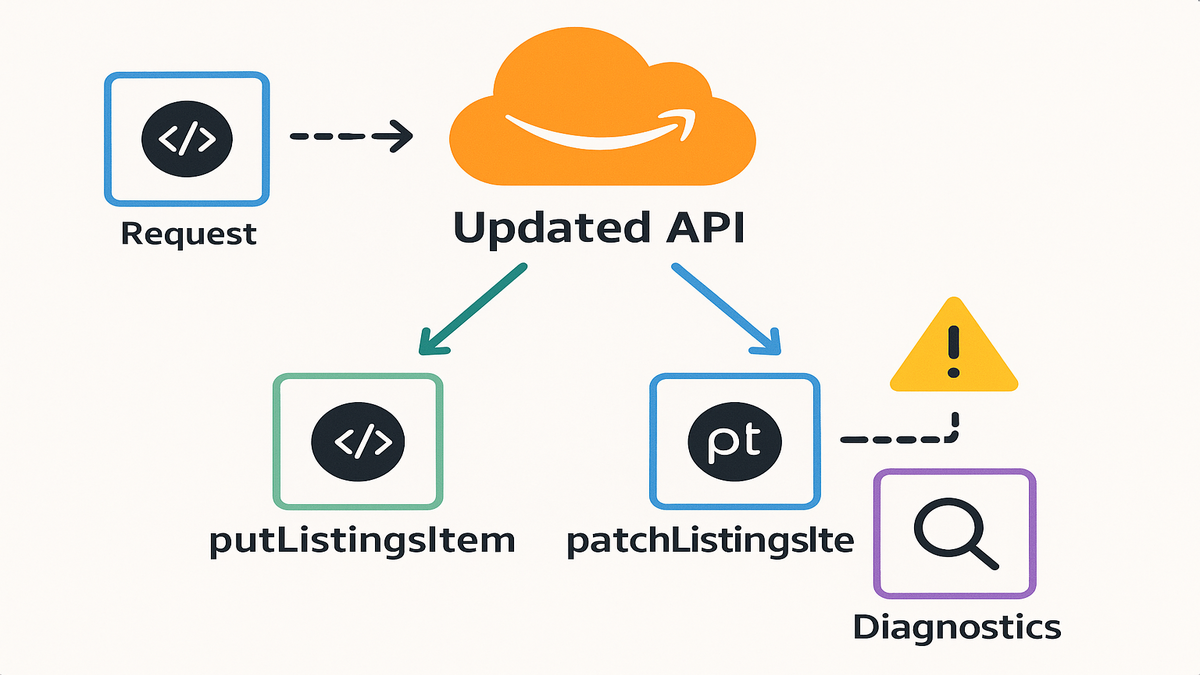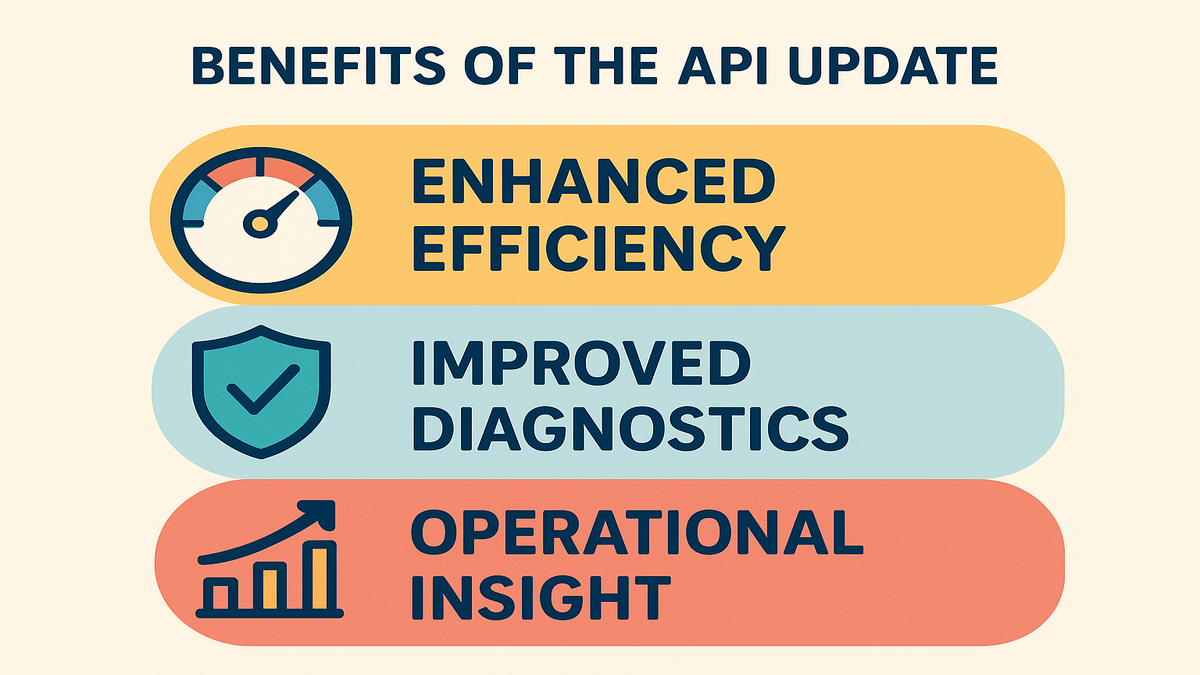
Amazon's Listings Items API: Rate Limit Updates Unveiled

In the ever-changing e-commerce world, staying updated is key. Especially with Amazon's Listings Items API. There's a new update that's catching eyes. This API now gives detailed rate limit throttle messages, improving how you work with the system.
If you're a seller or developer, you rely on Amazon's platform like you rely on air. Missing updates could mess up your sync or, worse, ruin transactions. The news? Amazon's Listings Items API now shows detailed throttle messages. No more guessing why your requests aren't working.
TL;DR
- Updated API:
putListingsItemandpatchListingsItemnow provide detailed rate limit messages. - Granular Details: Get insight into rate limit throttles at various levels.
- Practical Impacts: Streamline your API interactions with clearer diagnostics.
- Proactive Management: Helps you plan API calls effectively.

The Listings Items Update
Amazon's API system is strong, but here we’re zooming in on Listings Items API. Especially the new updates in rate limit messaging. They now make it clear when you're about to hit rate limits, giving you a map to handle requests like a boss.
What’s New?
Amazon has made the rate limit messaging of the Listings Items API much more detailed. Before now, hitting a limit felt like hitting a wall on a freeway. Now, you've got a guide to avoid those annoying 429 errors.
“The putListingsItem and patchListingsItem operations now serve more than just data—they offer clarity,” says an Amazon spokesperson.
With these new throttle messages, you're not just told you hit the brakes, but why and how. This lets you streamline operations and optimize flow like never before.
Why Does This Matter?
Think about navigating through thick fog of data, only knowing a limit is there without knowing how close it is until too late. Amazon's new update clears the fog. Here's why it matters:
- Enhanced Efficiency: Knowing precise throttles means better API calls, better planning, and less downtime.
- Improved Diagnostics: With detailed messages, developers can find issues quicker, narrowing down solutions fast.
- Operational Insight: It’s about getting a clear view of your API interactions, letting you make informed choices.
By clearing up the rate limits, Amazon boosts your operations, ensuring smoother, more reliable API integration.

The Backstory: Unpacking Rate Limits
First, let's go back. API rate limits aren't random restrictions; they're crucial for system health. They stop the servers from overloading and ensure fair use across Amazon's massive web of sellers.
Before these detailed messages, the system just signaled 'slow down,' like a speed limit sign without numbers. Now, Amazon's showing your speed in real-time, helping you adjust before things go wrong.
From requests per second to burst capacities, each piece is made to keep the peace, ensuring everyone gets a fair share without hurting service quality.
Standing at the Forefront
It's 2023, and while AI and automation are changing landscapes, API interactions still drive online selling. With those improved rate limit messages, Amazon's ensuring its APIs stay key, sparking innovation without interruption.
Developers can now link Amazon’s API with their systems better, hitting fewer metaphorical walls. This means smoother transaction processes and less downtime, vital in a world that's always on.
Explore our Features to enhance the efficiency of your Amazon API integrations.
Future Vision: What's Next?
With current enhancements, we can’t help but wonder what Amazon might do next. As data shapes decisions, imagine AI predicting your next throttle hit or suggesting API calls based on habits.
The future? Probably a more automated integration process, letting tech do the heavy lifting.
Mid-Market Boost
- Clearer Diagnostics: Detailed messages outlining specific throttles.
- Reduced Downtime: Proactive management leads to smooth operations.
- Strategic Planning: Detailed insights allow for smarter API strategies.
FAQs about Listings Items API
What is the new update in Listings Items API?
The update letsputListingsItemandpatchListingsItemoperations provide detailed rate throttle messages.How do rate limit messages help?
They show details about request limits, letting you plan API calls better and cut errors.What does
429error mean?
It means you sent too many requests, going over rate limits.Why are these changes being made?
To improve user experience by clarifying rate limits and boosting efficiency.How can I access these new functionalities?
These are part of the current Listings Items API operations documentation.
Optimize API Use
- Monitor Rate Thresholds: Check throttle messages often to know your limits.
- Plan Strategically: Use info to schedule API calls during quieter times.
- Adapt Quickly: Stay nimble and update based on feedback from throttle messages.
In a fast world, your edge is foresight, not speed alone. By optimizing how you use it, your operations can slide smoothly down the API path.
Thinking through these details makes you both a seller and a strategist. As APIs become more key, staying updated is your best shot. Dive into Amazon's developer resources to fully leverage these updates and find new ways to boost your selling strategy.
References
Remember, being forewarned is being forearmed. The API data tides are easier to navigate with the right tools.

